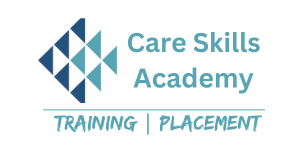In the world of electronics, printed circuit boards (PCBs) are the backbone of nearly every device we use, from smartphones to household appliances and industrial machinery. PCBs form the basis for electrical connections and control systems, and when they malfunction, the entire device can stop working. The demand for skilled PCB technicians has skyrocketed with the proliferation of electronic devices. If you’re looking to dive into the field of electronics repair or expand your technical skills, enrolling in a PCB Repairing Course could be your gateway to success.
Why Choose PCB Repairing as a Career?
As electronic devices become more integrated into our daily lives, the need for professionals who can repair and maintain these devices has grown. Companies and individuals prefer to repair devices rather than replacing them, which makes PCB repair a highly sought-after skill. Moreover, the ability to fix faulty circuit boards is not only essential for consumer electronics but also for medical devices, telecommunications, automotive systems, and industrial machines.
PCB repairing offers a stable and growing career path, with opportunities to work in specialized industries or even start your own business. Whether you’re a beginner, an electronics hobbyist, or a seasoned technician, PCB repair can open new doors for you in the rapidly evolving tech world.
What You’ll Learn in a PCB Repairing Course
A comprehensive PCB repairing course offers a blend of theory and hands-on training. Here are the key topics you will cover:
- Understanding PCBs: The course starts with an introduction to PCB technology, where you’ll learn about the structure and function of different types of PCBs, including single-layer, multi-layer, and flexible PCBs. Understanding the layout and role of components like resistors, capacitors, and microchips is essential.
- Soldering and Desoldering Techniques: Soldering is a critical skill in PCB repair. You will be trained on how to solder components to the board accurately without damaging it. The course also covers desoldering, which is the process of removing components for replacement or troubleshooting.
- Component Testing and Replacement: Not all PCB issues are visible. Learning how to test individual components like resistors, capacitors, diodes, and transistors is crucial. You will use multimeters and oscilloscopes to measure voltage, current, and resistance, and replace defective components to restore functionality.
- Circuit Tracing and Diagnostics: Diagnosing the root cause of a problem on a PCB can be complex. You’ll learn how to trace circuits to find breaks, shorts, or faulty components. This skill is key for troubleshooting and fixing complex electronics.
- PCB Rework and Reassembly: Sometimes, PCBs need reworking, which involves repairing or modifying boards after production. This could include fixing design errors or replacing damaged areas. The course will teach you advanced reworking techniques to handle such tasks professionally.
- Safety Measures and Best Practices: Working with electronics, especially at the component level, requires strict adherence to safety standards. You will be taught how to work safely with tools, handle delicate components, and avoid electrostatic discharge (ESD), which can damage sensitive electronics.
- Introduction to Surface-Mount Technology (SMT): Many modern PCBs use surface-mount technology, where components are mounted directly onto the board. You’ll be introduced to the specialized tools and techniques needed to repair SMT boards, which are more compact and delicate than traditional through-hole PCBs.
- Hands-On Practice: Most courses offer practical training sessions where you can work on real circuit boards, diagnosing issues, repairing faults, and testing your work. This hands-on experience is crucial to building confidence and proficiency in PCB repair.
Benefits of Enrolling in a PCB Repairing Course
- High Demand for Skills: With the increasing use of electronics in almost every industry, PCB repair skills are highly sought after. From consumer electronics to medical and industrial devices, technicians with PCB expertise can find opportunities across sectors.
- Career Flexibility: Once you master PCB repair, you have the flexibility to work as a freelance technician, start your own repair business, or work for a company in a specialized field like telecommunications, aerospace, or healthcare technology. The skills are transferable across industries, offering versatile career options.
- Hands-On Learning: PCB repairing courses focus on practical training, allowing students to work on real PCBs. By practicing on actual boards, you will gain the experience needed to handle real-world challenges in electronics repair.
- Cost Savings and Sustainability: With increasing concerns about e-waste and sustainability, PCB repair offers an eco-friendly alternative to replacing electronic devices. Companies and consumers alike are opting for repairs, leading to cost savings and reduced environmental impact. As a trained PCB technician, you can play a role in promoting sustainable technology practices.
- Job Security and Growth: As technology evolves, the need for electronics repair will continue to grow. A career in PCB repair offers job security, as the demand for skilled technicians will remain strong, especially in industries reliant on high-tech equipment and electronics.
Conclusion
Enrolling in a PCB Repairing Course is a smart investment for anyone interested in electronics repair, whether you’re a beginner looking to learn a new skill or a professional seeking to enhance your expertise. With hands-on training, practical knowledge, and the opportunity to work in various industries, this course offers a pathway to a rewarding and in-demand career.
Sign up today, and take the first step towards becoming a skilled PCB technician, opening the door to a world of opportunities in the fast-growing field of electronics repair!

